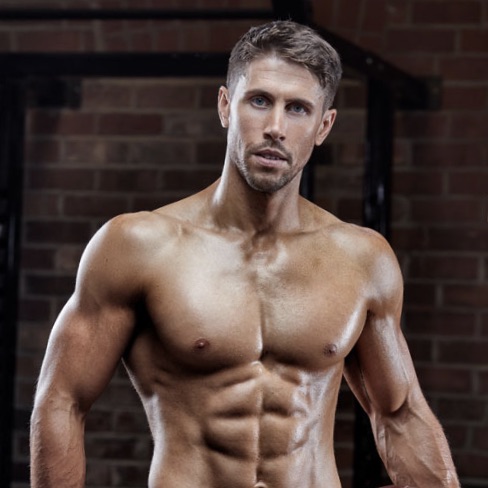It’s a common question among those trying to drop body fat; should I still be drinking protein shakes?
Calories In Versus calories Out
When it comes to losing weight it’s as simple as calories in versus calories out.
In essence it’s almost as simple as needing to do more and eat less. Scientifically this is covered in the first two laws of thermodynamics.
Evidence for this is in those that have proven eating a calorie-restricted diet full of things such as doughnuts, candy, and fast food, have still lost weight. Logic would not say this isn’t a sensible or healthy way to do things, however the fact is “doing more and eating less” by either increasing exercise or lowering calorie intake, or both, will cause weight loss.
When it comes to dropping body fat and not just body weight, and maintaining lean mass, however, it gets a little more complicated. This is where a calorie is simply classed as a calorie, and your macronutrient intake plays a vital role.
Enter Protein and Protein Shakes
Net protein balance is the difference between muscle protein synthesis and muscle protein breakdown.
In order to gain muscle and promote recovery; protein balance must be positive, in another words protein synthesis (the formation of new muscle proteins) must be higher than protein breakdown.
Using protein shakes and supplying the body with amino acids during the day and around key times (before, during and after training) plays an important role in maximising the responses described above, and works in a two-pronged manner.
Protein shakes can:
✓ Increase muscle protein synthesis and,
✓ Decrease protein breakdown.
Because of this, a higher net protein balance is achieved, helping to promote gains in lean muscle mass, strength and recovery.
Here’s the interesting thing however….
When you’re in a calorie deficit and cutting down, your protein turnover is higher, and the body is likely to be in a catabolic (muscle breakdown) state. Muscle protein breakdown is higher. You therefore risk losing lean muscle tissue if you don’t do things right.
If protein turnover is greater, then it would surely make sense that more dietary protein is needed to be able to deal with the body’s constant challenge to synthesise new proteins and muscle tissue, when all it wants to do is them down.
So, let’s just say as a typical example of someone who’s cutting down, you think that because you’re not in a muscle building phase, or you don’t feel you need the extra calories, you eliminate protein shakes from your diet. Now you may well be saving 100 calories per shake, but is that worth the risk of:
✓ Having an overall lower dietary protein intake, at a time where your body’s breaking down more proteins.
✓ Not getting the anabolic effect of using protein shakes around workout times.
✓ Affecting your speed of recovery. So that means not being able to train as hard, meaning less calories burned each workout.
✓ Not having the psychological effect of having something post-workout, potentially meaning you’ll grab and gorge on something else.
✓ For some the sweetness of a protein shake can also curb diet cravings. Something you’re unlikely to get from any other foods as low in calories and sugar.
Other Protein Benefits
Protein has a high thermic effect of feeding (TEF) than carbs or protein, meaning you burn more calories than carbohydrates and fat to be able to digest protein. TEF only plays a minor role in metabolism, however every little helps when it comes to reaching your body transformation goals sooner.
Protein also keeps you feeling fuller for longer if 30g or more is used in one sitting. The typical protein shake has around 25-30g of protein per serving and for only around 100 calories. You’d have to eat around say 5 boiled eggs to hit 30g of protein, but you’d also be having way more calories! Three times the calories in fact!
Calorie restriction?
When dieting down to become leaner and more defined, it makes sense that due to your calories becoming more restricted, you’d need to consume more bang-for-your-buck foods. Foods and snacks that are lower in calories, but higher in protein and other nutrients.
✓ As a bonus most good protein shakes are low in both fat and carbohydrates. So whether you’re choosing to use a low carbohydrate, low fat, or mixed approach; healthy fats or carbohydrates can be added to your diet via other means.
For example: blending your protein shakes with nut butters could make a good snack or meal replacement for low-carb dieters, whereas blending your shake with oats or a banana would suit dieters using a lower fat approach.
✓ As a general rule of thumb low-carb diets should be higher in fat, whereas lower fat diets should be higher in carbohydrates. This stops the body turning to protein and amino acids to use as an energy source, and keeps other bodily processes ticking over.
How To Choose Your Protein
Here are some simple, non-restrictive rules:
1) Use a fast acting form of protein around your workouts such as whey, or hydrolysed proteins. Exactly the same as though you weren’t dieting down. If you prefer plant-based proteins then just consider that although many are excellent, and just as good a protein source, they are not as fast acting as whey.
2) If using protein shakes as meal replacements a mix of fast acting and timed release proteins will work best. For example, whey protein mixed with pea protein, milk protein or casein work well.
3) When using protein shakes for meal replacements try combining them with other foods to increase the nutrient density (for example berries, spinach, kale etc.), or even a superfood supplement.
4) Try using nut butters, coconut oil, or even fresh avocado in your protein shakes to add healthy sources of fat in to your diet when using a low carbohydrate approach.
5) When using a low fat approach to your diet try experimenting with different fruits, and other low GI carb sources such as oats and barley.

I build Olympians, Cover Models and those who want to look like them. Author or “Ultimate Abs” available in all good book stores.
